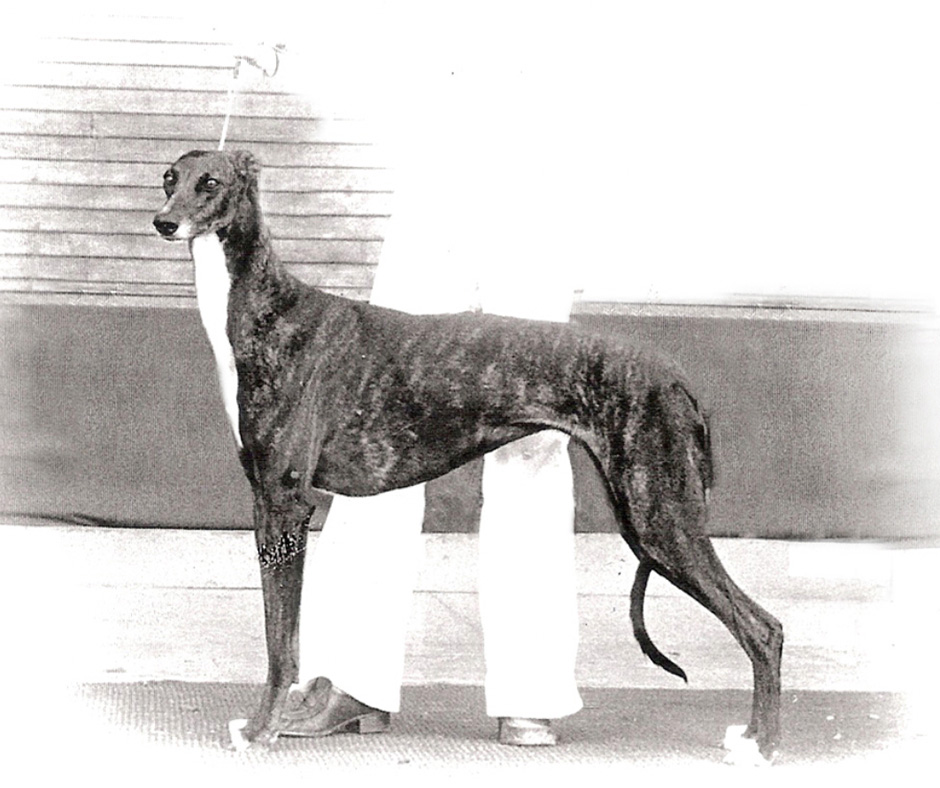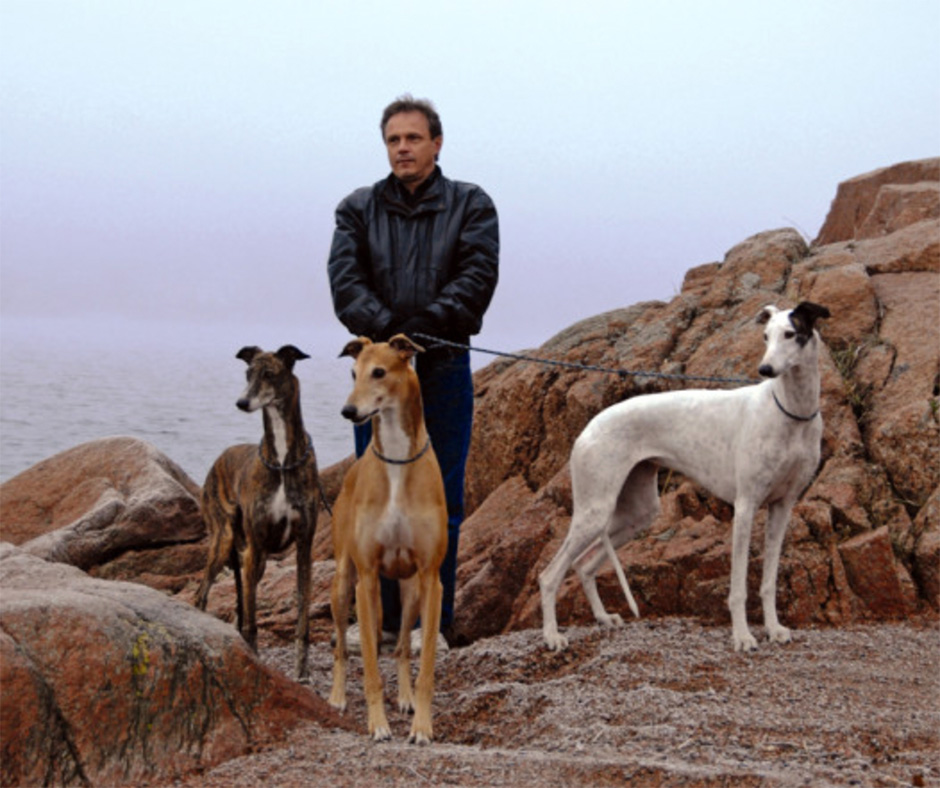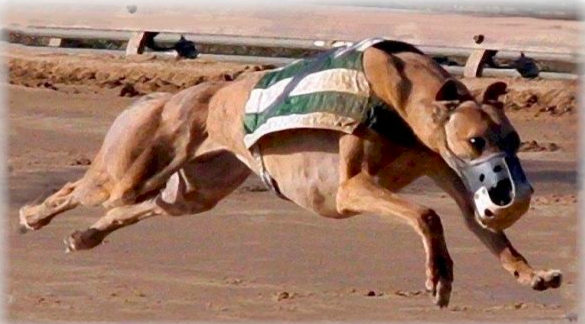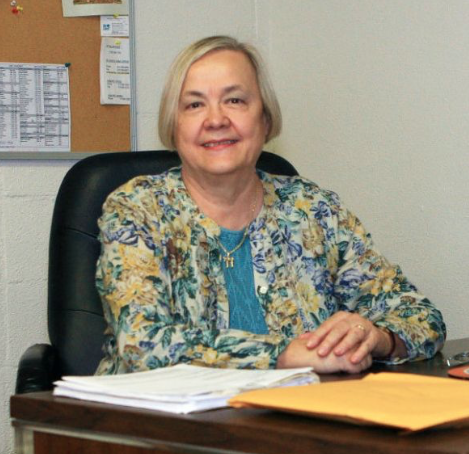642 – Espen Engh Offers a Master Class on Dog Breeding
Espen Engh Offers a Master Class on Dog Breeding
Famed Norwegian Greyhound breeder and judge, Espen Engh, is back with host Laura Reeves offering a Master Class on dog breeding.
“When we started out, there was a combination of two very different British strains that had proven that it worked really worked,” Engh said. “Those two breeders were at the end of their career and they hadn’t mixed their dogs a lot while they were still active. But some very clever breeder very quickly found out that combining those two lines worked extremely well and produced dogs that had been almost unheard of before truly high quality.
“So we collected different crosses between those two lines to combine our own strain to start out with. And I do think it helped a lot that my mother had been active in the breed for 20 years before breeding the first litter. She had been judging for many years as well. We didn’t have to do a lot of the beginner’s mistakes. So from day one, we were able to start at a high note.
“When the breeder repeated (that successful breeding of two disparate lines) by luck or persistence, we were able to buy what we considered to be the best bitch in that repeat litter. And she turned out to be just as good as or probably better than those puppies from that first combination. So we were able to start with a really phenomenal bitch.
“We had a phenomenal male at the time too. He was runner up top dog all breeds in Norway. And maybe if we were amateurs, or if my mother was an amateur, we would have bred those two together, but they didn’t really fit. We would double up on faults. The male turned out not to be a good stud dog at all. And we had lots and lots of litters for other breeders. We never used him. So rather than using that top winning really beautiful dog, which didn’t fit the bitch, we didn’t do that from the start.
“So our first combination was quite successful and we got an outstanding bitch in that first combination. And then we quite quickly realized that in order to progress, you know, now we have like two generations of phenomenal bitches, we would never be able to be big breeders number wise. We didn’t have a big kennel, we didn’t have the style, the facilities to breed dogs on a large scale. So we had to make a system where you can actually breed successfully from a limited number of dogs.
“And I thought, why not just base it on breeding from the very best bitch of each generation? And that’s what we did. When we were at the most active, we would have three or preferably four litters from the very best bitch of each generation.
“As Greyhounds are very fertile, you’ll get an average of like 10 puppies or nine, 10, 11, 12 puppies. Each of those top bitches would then have 20 daughters to choose from. I mean, in every litter, we would keep all the bitches that were thought were good enough. Most of them never just one, two or three. And we’d run them on until they were fully grown so we would know for sure who was the best. And selected the best bitch of each generation and repeated that.
“Now, if the mother is great, the grandmother is great and the great -grandmother is great, you’re very likely to get the really good one out of 20 bitch puppies, aren’t you? But We also need some males to breed them to.
“We also chose the second-best bitch in the generation. Remember the mother had four litters, she would be bred to four different males. We selected the second-best bitch from each generation, preferably a half-sister to the main bitch, which I call the alpha bitch. So the second best bitch, the beta bitch, we would try outcrosses on her.”
641 – Espen Engh on Greyhounds and Judging
Espen Engh on Greyhounds and Judging
Host Laura Reeves is joined from Norway by famed breeder and judge Espen Engh of Jet’s Greyhounds for a two part conversation about Greyhounds, judging, breeding and why the Scandinavian dogs are so consistent in quality.

Int. Ch. Jet’s Elegant Negress, Engh’s first Best in Show winner from his first litter.
“I kind of inherited the interest for dogs in general and Greyhounds in particular because my mother started up with a Greyhound in 1955 so she was the source of everything,” Engh said. “She got her own mother hooked on the Greyhounds as well. So I’m a third generation Greyhound fancier and lover.
“My mother was only a teenager when she started out. She was very quickly bitten by the bug and started showing her first Greyhound all over Scandinavia. She didn’t breed, however, she didn’t have the possibility to do that. So my mother and I started breeding Greyhounds, 20 years after she got her first one, in 1975. And although my mother is no more with us, I keep reading from the same strain, actually from the same bitch line that was started in the early ‘70s.
“There are many things that make the Greyhounds unique. And one of them is their long, long, long history and the amount of generations that have gone into breeding greyhounds. I’m quite sure that the Greyhound is the only breed where you can actually trace the pedigrees back to the 1700s.
“(The first description of the Greyhound as having the “head of a snake, the neck of a drake”) is from a poem that was attributed to a woman called Juliana Burners more than 500 years ago.
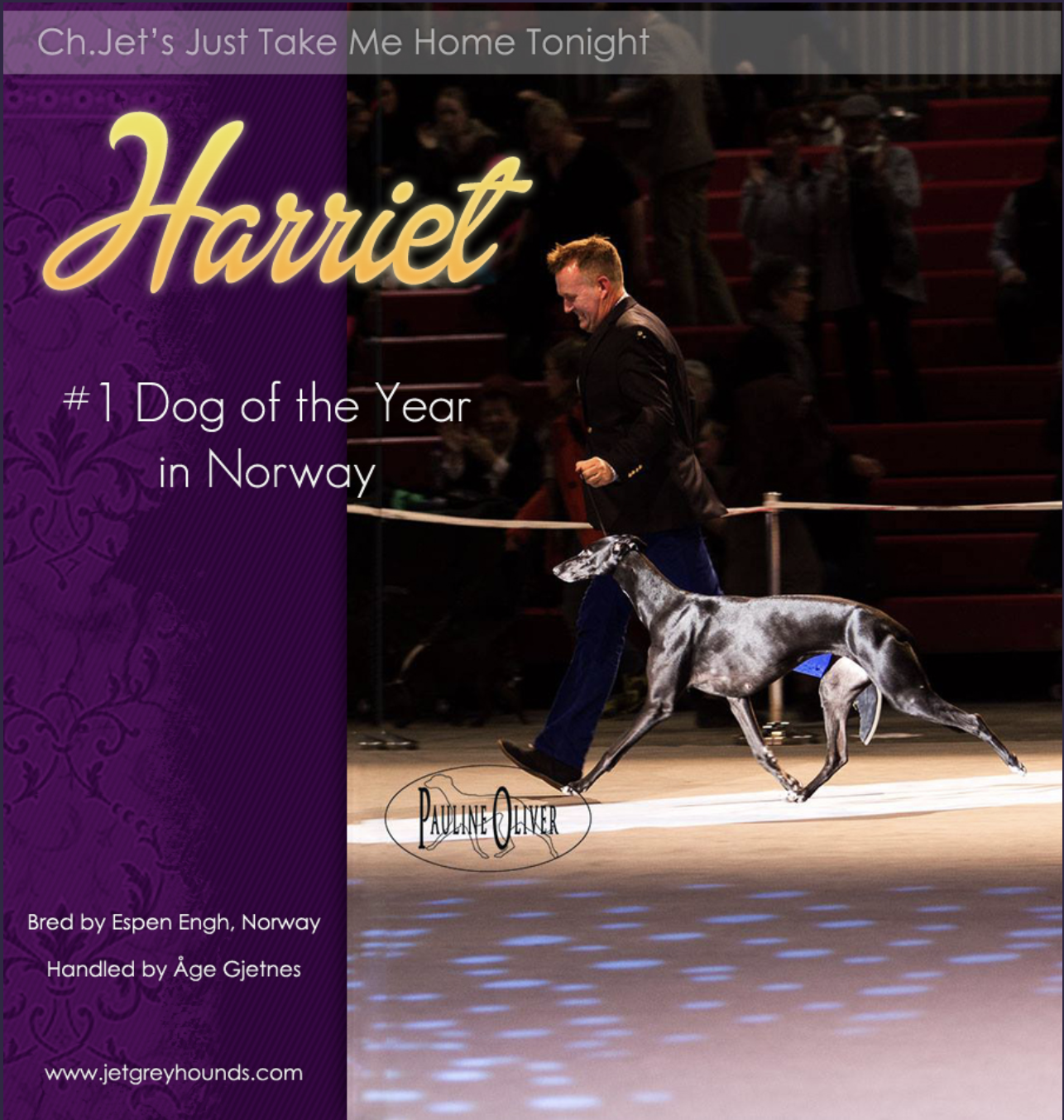
Ad for one of Engh’s multiple BIS winning Greyhounds.
Actually, she didn’t exist. So it’s somebody else wrote it. But that you could say is kind of the first Greyhound standard, because it describes the Greyhound, the head, the neck, the feet in a poem. Greyhounds are a very sophisticated breed. They are very close to their owners. They are about a combination of substance with elegance.”
Engh has been invited to judge at the highest levels worldwide.
“It certainly is a privilege. It’s certainly something very enjoyable to be able to travel around, somebody else picking up your bill, to enjoy looking at dogs, feasting your eye on dogs, getting that little tear in your eye every now and then, maybe a goose bumps every now and then too, which is really one of the reasons for doing it.
“But it does also present some challenges and some difficulties. Some breeds do have very different breed standards and that can certainly pose some difficulties. Other breeds, actually the breed standards themselves are not that different, but the development of the breeds are. So they have developed in quite different directions.
“Obviously, and I think we need to state that from the beginning, if you are willing and able and do undertake judging a breed in a foreign country, you have to respect the breed standard in that country. I mean, that should go without saying, but it doesn’t always.”
225 – Fighting to Preserve our Breeds and their Purposes
Inside the battle to preserve racing Greyhounds
Jennifer Newcome, chair of the committee to support greyhounds, joins me to talk about the fight to preserve Greyhound participation in a sport they love and the current ballot initiative in Florida to ban betting on Greyhound racing.
The proposed legislation is a Constitutional amendment that effectively allows Animal Rights extremists to define what constitutes humane treatment of animals, rather than breeders, owners and exhibitors, Newcome said.
Equating a dog’s purpose-bred job with inhumane conditions, is a “terrifying” concept, Newcome added. It creates a vehicle for banning all activities with animals at the constitutional level.
From the Greyhound Club of America:
About The Greyhound
Purpose
The Greyhound is a sighthound and one of the oldest breeds of dogs. Sighthounds are hunting dogs that pursue running game by sight rather than by scent. This manner of hunting is called “coursing”. The attributes of speed, agility, strength and endurance are necessary to catch and hold game. The feature that distinguishes Greyhounds (and sighthounds) is their ability to run at speeds of 35 miles per hour or more using the double suspension gallop. The Greyhound demonstrates the double suspension gallop in its highest perfection. Their incredible speed comes from the singular combination of skeletal structure, musculature, and the ability to focus completely on the object of the chase.
Greyhounds and other sighthounds course game independently of humans. Sighthounds are unlike other breeds such as herding dogs that take signals from humans when moving sheep from pasture to pen or sporting dog breeds that range out to point and hold birds in one spot until their human indicates it’s time to flush. Once the chase is on and the Greyhound is on its way, there is very little you can do to intervene until the chase is over.
Newcome encourages all Florida residents to vote no on Amendment 13 to protect all of our rights to enjoy the various sports we play with our animals. The American Kennel Club and National Animal Interest Alliance also oppose this legislation.
114 – Saving Dog’s Lives: Canine Blood Bank with Dr. Jean Dodds – Part 1
Dr. Jean Dodd’s – Part 1 – Canine Blood Bank
Welcome to Pure Dog Talk’s 4 part series with Dr. Jean Dodds, DVM. In this episode #114 Saving Dog’s Lives: Canine Blood Bank, Dr. Dodds introduces us to how the first canine blood bank originated.
Jean packs an immense quantity of breeder information on blood types, herpes, plasma and more in this episode that I can’t begin to summarize it all… you will just have to listen!
Hemopet – the Canine Blood Bank
Founded by Dr. Jean Dodds, Hemopet provides state-of-the-art blood components and supplies for transfusions to veterinary clinics nationwide.
Hemopet also is a diagnostic testing lab that specializes in thyroid testing which will be featured in Part 2, Episode # 116.
Resources from Hemopet:
Greyhound Adoption from Hemopet Blood Bank
Greyhounds are the primary blood donors for the blood bank. Highly screened for infectious disease and tested prior to inclusion in the blood donor program, these gentle dogs give so other dogs may live.
4 -5 Greyhounds cycle out of the Hemopet program each week and are available for adoption. Find out more at Hemopet.org.
Book Bonus: Canine Nutrigenomics by Dr. Jean Dodds
Listen to our book bonus near the end of episode #114, as Dr. Dodds talks about writing and publishing her two books. We cover Canine Nutrigenomics: The New Science of Feeding Your Dog for Optimum Health today, and next week we cover The Canine Thyroid Epidemic.
Dogwise Books – All Things Dog
For our listeners that are unfamiliar with Dogwise Books, Larry and Charlene Woodward have been publishing books for the dog fancy since the 1980s. Dogwise is a small company out of Washington state that deserves our support. Many of our favorite books, especially breed-specific and training books, would never be in print without Dogwise.

